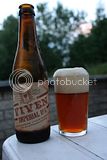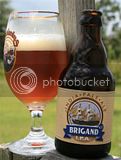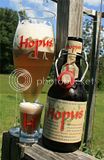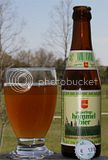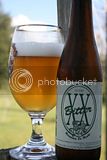For 5.25 Gallons...
10lb Pilsen
2lb Rye
1lb Beet Sugar
Anticipated OG: 1.064 (bad efficiency I know :-/ )
.7oz Warrior 60 minutes (14.6%aa)
1oz Amarillo 20 minutes (8.2%aa)
1oz Saaz 20 minutes (3.3%aa)
1oz Amarillo 5 minutes (8.2%aa)
.5oz Saaz Flameout (3.3%aa)
.5oz Saaz Dryhop
.5oz Amarillo Dryhop
Targeting 59IBU
Mash @150 for 1 hour, 90 minute boil.
Ferment with WLP550. I plan on fermenting this starting around 63-65* and if possible allowing it to raise up to 70* to bring out a bit of a more restrained spicy and phenolic flavor (as referenced in Brew Like a Monk, pp174)
Any suggestions? I've got the hops and yeast on hand already and would like to use them if possible...I just need to buy the grain for this one.
As for water adjustments...this is what I have in mind. I've used this rough adjustment for a few IPAs in the past and have been pretty pleased. Any recommendations otherwise?
10lb Pilsen
2lb Rye
1lb Beet Sugar
Anticipated OG: 1.064 (bad efficiency I know :-/ )
.7oz Warrior 60 minutes (14.6%aa)
1oz Amarillo 20 minutes (8.2%aa)
1oz Saaz 20 minutes (3.3%aa)
1oz Amarillo 5 minutes (8.2%aa)
.5oz Saaz Flameout (3.3%aa)
.5oz Saaz Dryhop
.5oz Amarillo Dryhop
Targeting 59IBU
Mash @150 for 1 hour, 90 minute boil.
Ferment with WLP550. I plan on fermenting this starting around 63-65* and if possible allowing it to raise up to 70* to bring out a bit of a more restrained spicy and phenolic flavor (as referenced in Brew Like a Monk, pp174)
Any suggestions? I've got the hops and yeast on hand already and would like to use them if possible...I just need to buy the grain for this one.
As for water adjustments...this is what I have in mind. I've used this rough adjustment for a few IPAs in the past and have been pretty pleased. Any recommendations otherwise?
Code:
Starting Water (ppm):
Ca: 13
Mg: 2
Na: 2
Cl: 5
SO4: 18
HCO3: 24
Mash / Sparge Vol (gal): 3.8 / 3.5
RO or distilled %: 0% / 0%
Total Grain (lb): 12
Non-Roasted Spec. Grain: 0
Roasted Grain: 0
Beer Color (SRM): 5
Adjustments (grams) Mash / Boil Kettle:
CaSO4: 3 / 2.76
CaCl2: 0 / 0
MgSO4: 2 / 1.84
NaHCO3: 0 / 0
NaCl: 0 / 0
CaCO3: 0 / 0
Lactic Acid (ml): 0
Sauermalz (oz): 4
Mash Water / Total water (ppm):
Ca: 60 / 60
Mg: 15 / 15
Na: 2 / 2
Cl: 5 / 5
SO4: 189 / 189
Cl to SO4 Ratio: 0.03 / 0.03
Alkalinity (CaCO3): -195
RA: -247
Estimated pH: 5.29


